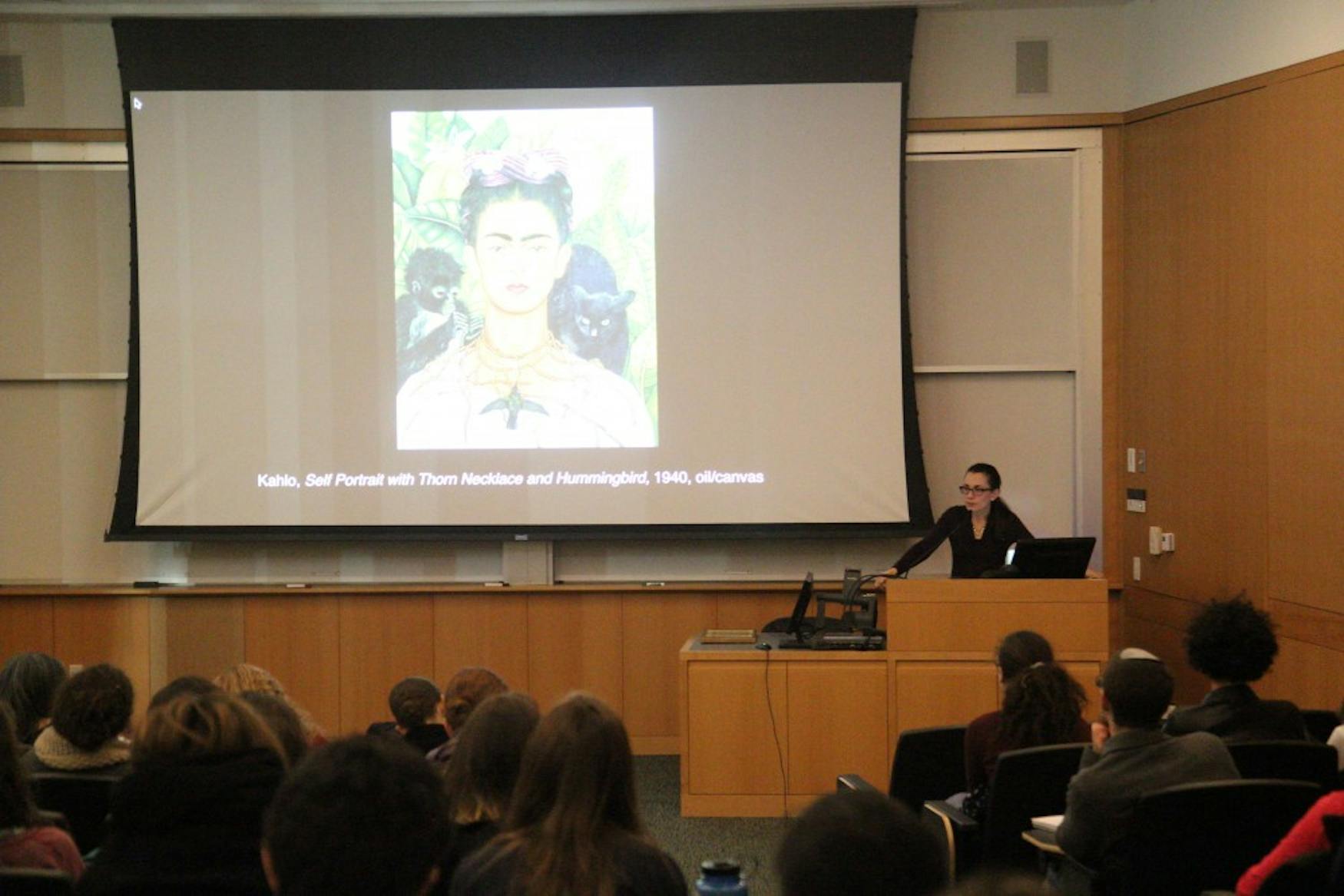Tufts professor speaks about Kahlo exhibit
Most Frida Kahlo exhibits focus on the artist’s work as a reflection of her life, but curator Adriana Zavala, associate professor of art and art history at Tufts University, has taken a different approach in her upcoming exhibit at the New York Botanical Garden in the Bronx. The exhibit, which will run from May 16 to Nov. 1 2015, instead views Kahlo’s art through a botanical lens, focusing on the nature and plant aspects of her prolific work. Zavala spoke to a group of Brandeis colleagues and students last Thursday as a guest lecturer for Prof. Gannit Ankori’s (FA) class on Frida Kahlo this semester.
The upcoming exhibit is titled Frida Kahlo—Art Garden Life and takes advantage of the botanic garden’s nature-inspired setting. When the New York Botanical Garden asked her to curate the exhibit, Zavala saw it as an “opportunity to do something a little different with Frida,” she said and instead focus “on Kahlo’s relationship with the natural world.” Overall, Zavala explained that the exhibit seeks to “bring forward to the public a more profound understanding of Kahlo’s appreciation of indigenous Mexican history, culture and plant life.”
Zavala started her talk by discussing one of Kahlo’s most famous works—“Self Portrait with Necklace of Thorns.” This painting, which will be featured in the exhibit, is the perfect example of Kahlo’s relationship with nature. The background depicts incredibly detailed large tropical plant leaves as two monkeys sit on her shoulders and a dead hummingbird on a necklace hangs from her neck. Zavala moved on to discuss La Casa Azul, Kahlo’s blue house in Coyoacán, Mexico, where the gardens held an important role in her famiy’s life. Kahlo’s home is an architectural representation of her artistic creativity, from its painted exterior to the artwork on its walls to the Mexican and European plants in the garden. Kahlo also owned and studied botanical books and other works, such as Walt Whitman’s Leaves of Grass, that often influenced her paintings. Zavala explained that the book contains actual plants pressed onto the pages that Kahlo herself put into the book.
Zavala next discussed the work “Portrait of Luther Burbank,” a prominent horticulturist. In the painting, Kahlo painted Burbank as if he—like a plant—was rooted into the ground. Zavala also pointed out that “Burbank was a hybridizer of plants, and of course, Kahlo was herself somebody who thematized hybridity quite a bit.” Kahlo represented hybridity in many ways in her work, most notably in the ways she imagined the balance between indigenous culture in Mexico and the influence of Europe. This clash of cultures was especially prevalent in the post-revolutionary period of Mexico.
The next slide of Zavala’s presentation featured three still life paintings of fruit, including “Still-Life with Parrot and Flag”—a piece that will also be featured in the exhibit. The fruit in all the works is incredibly detailed and precise and represents Kahlo’s interest in nature. When many people think of Kahlo as an artist, they sometimes only consider her more famous self-portraits; however, the still life works add another dimension to understanding Kahlo and her style as an artist.
The centrality of La Casa Azul to Kahlo’s work and life is also very important, and the house changed over time as Kahlo’s interests evolved. For example, the garden featured more Mexican plants at some points. Zavala also explained the importance of the house through the painting “My Grandparents, My Parents, and I (Family Tree)” that features portraits of her family members, a Mexican landscape and La Casa Azul. The painting shows Kahlo’s genealogical background that is rooted in her family home.
The exhibit features three paper works and 11 paintings, Zavala said. This exhibit’s selection was limited by multiple other exhibits of her work occurring simultaneously. However, the exhibit will also include various public programming throughout the year, such as cooking workshops and film screenings and a poetry walk featuring the works of Mexican poets. As well, because of the large Latino population in the Bronx, Zavala also added that the exhibit will have bilingual interpretation to make it more accessible to Spanish-speaking individuals.
Zavala’s guest lecture offered a teasing hint at the fascinating exhibit that will soon take place at the New York Botanical Garden. Popular culture frequently diminishes Kahlo’s capacity and impact as an artist, but this exhibit recaptures Kahlo’s intellect and talent by taking a non-traditional approach in displaying her work.




Please note All comments are eligible for publication in The Justice.